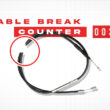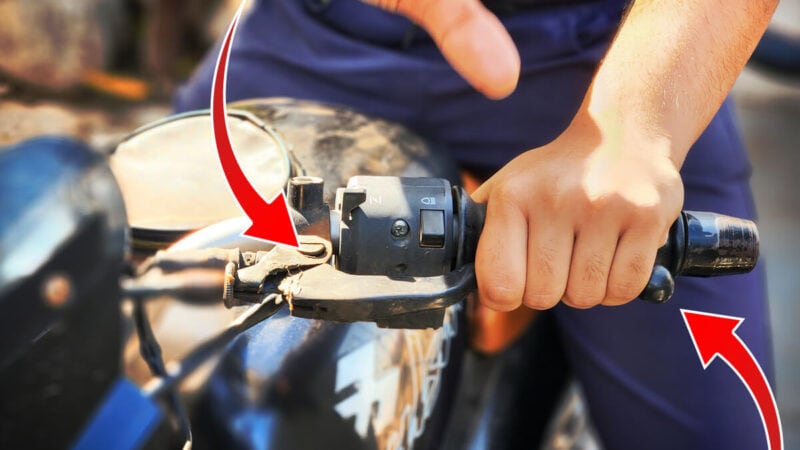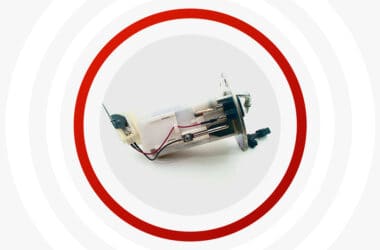To get the motorcycle running and shifting through each gear properly a well-functioning clutch is needed. But a motorcycle clutch hard to pull or notably stiff makes the task of shifting gears much more demanding and harder requiring a lot of effort and can result in a bad/poor gear shift where the clutch is not completely disengaged.
The reason why your motorcycle clutch is so hard to pull resulting in a stiff or tight clutch lever is due to ill-lubricated, damaged, or corroded parts of the clutch assembly.
In this article, we will go through multiple reasons why your motorcycle clutch is so hard to pull and how to fix each of these problems effectively.
The majority of causes for tight clutch cable/lever are related to faulty components of the clutch assembly and there are multiple reasons why your motorcycle clutch is so hard to pull.
Table of Contents
10 Major Reasons Why a Motorcycle Clutch is So Hard to Pull & How To Fix Them
1. Worn/Damaged Clutch Cable
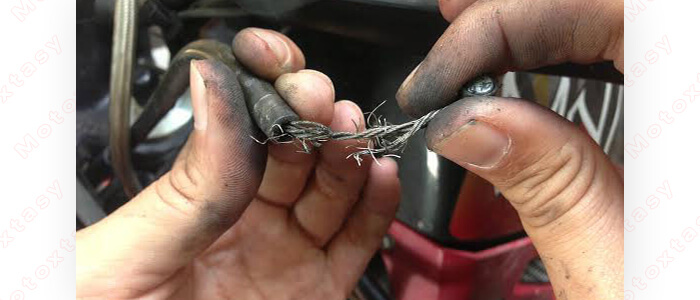
A clutch cable could go under a significant amount of wear and tear over time, and lack of clutch cable lubrication is a cause of it.
A damaged clutch cable has fraying where the strands of the clutch cable come loose get broken and stick out inside the Polyvinyl chloride (PVC) or teflon sheath/housing.
Generally, motorcycle clutch cables/wires are made from braided stainless steel.
Once they get damaged, these broken strands of braided stainless steel clutch cable/wire poke out and cause friction inside the housing or sheath (outer cover) of the clutch cable.
How To Fix: Lack of lubrication will cause worn or significant damage to the clutch cable. Now if the clutch cable is already worn and past due to its maintenance and has fraying, then replacing it is the only option.
2. Buildup Of Dirt Inside The Clutch Cable Housing
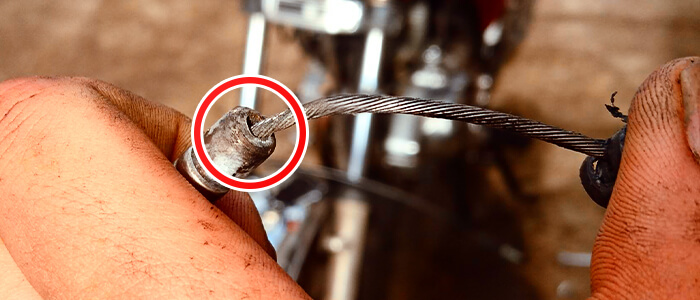
Occasional Sunday rides will keep your bike squeaky clean. But as a motorcycle-loving, throttle-twisting, street or track-riding rider like yourself (I hope you are one 😉 your motorcycle is bound to get dirty.
But the chances of a serious amount of dirt/dust entering the cable housing are pretty slim unless you are regularly riding in super dusty off-road tracks.
Clutch lubrication coupled with the build of dirt/dust entering inside the cable housing will cause the lube residue to get sticky and heavy, so this could make the clutch feel tight.
How To Fix: To avoid dirt/dust getting inside the clutch cable housing buy a clutch lever dust cover. To remove the dirt buildup inside the cable housing, detach the cable from the motorcycle and spray aerosol specialist cable lubricants (but avoid harsh solvents or any penetrating oil like WD-40 or Liquid wrench) inside the cable housing and move the cable up and down in motion to free up the gunk/dirt buildup.
Keep spraying until the sticky dirt gets free and comes out of the other end of the clutch cable opening.
3. Tight & Corroded Clutch Lever Pivot Point
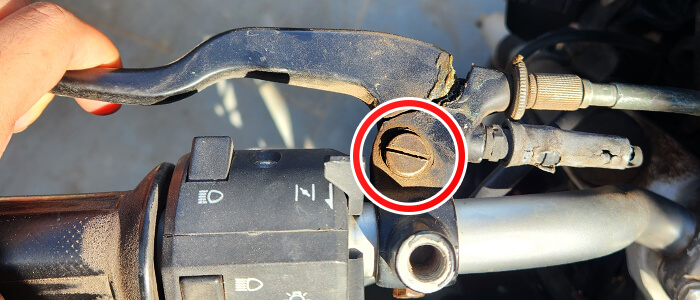
For a clutch lever to move properly and smoothly it needs to be a pivot point clutch lever retaining bolt and bearing to be in good condition.
Corroded pivot point clutch lever bolt or bearing will cause the motorcycle clutch lever to be tight and hard to pull.
Over time the threads of the bolt/screw may get flattened or dull causing the pivot point screw to get stuck inside the clutch pivot point tapped hole/threaded hole.
How To Fix: If the retaining bolt of the clutch lever pivot point is completely corroded or has flat threads on it, then replace it with a new bolt. Spray lube or grease on the pivot bearing before screwing in the new clutch lever pivot point bolt.
4. Wrong Adjustment Of The Clutch Lever Free play
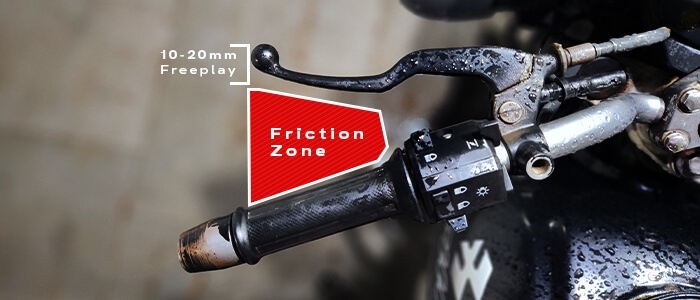
Wrong adjustment of the clutch lever simply means the slack/free play of the clutch cable is not within the range of 10-20 mm.
You can always refer to the specific owners/service manual for your motorcycle, but the slack of the clutch lever on average is around 10-20 millimeters. It’s measured from the end of the clutch lever to the motorcycle grip (handlebar’s end).
Too much or too little free play of the clutch lever damages clutch plates as the clutch won’t get fully disengaged or engaged while you pull the clutch lever.
Your motorcycle clutch will be slipping or dragging causing the motorcycle to have harsh gearshifts and not effectively deliver the power to the rear wheel.
How To Fix: As mentioned above you can always refer to your owner’s/service manual to get the exact clutch lever free play. Adjust the slack of the clutch cable through the barrel adjuster and keep the free play of the lever within 10-20 mm.
5. Clutch Cable Is Wrongly Installed
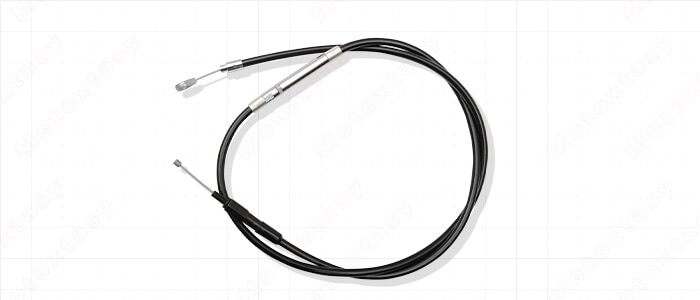
A wrongly installed clutch cable will either have too much slack or length resulting in clutch drag/sticking and on the other hand if have too light slack it will result in clutch slipping.
This will cause too much pressure/friction on clutch plates which can lead to permanent damage and a wrong installation of the clutch cable in some cases will cause the cable to break.
How To Fix: An incorrectly installed clutch cable simply means either the length of the cable is too long or too short or the free play of the clutch cable is wrongly adjusted.
6. Clutch Springs Are Stiffer
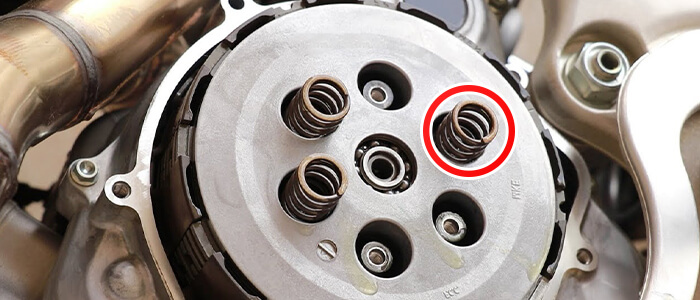
Clutch springs go around the clutch bolts which are placed on the pressure plate to apply pressure on clutch plates when you release the clutch lever.
While pulling the clutch lever the clutch springs expand and disengage the clutch plates consisting of steel plates and friction plates.
Stiffer clutch springs require more power/pressure to disengage the clutch plates which is why the motorcycle clutch will be too tight and hard to pull.
How To Fix: If your clutch springs are stiff which will result in heavy clutch, you can always go for a little softer clutch spring but not too soft to avoid bad clutch functioning/mechanics.
7. Clutch Cable Stuck Inside Clutch Cable Housing
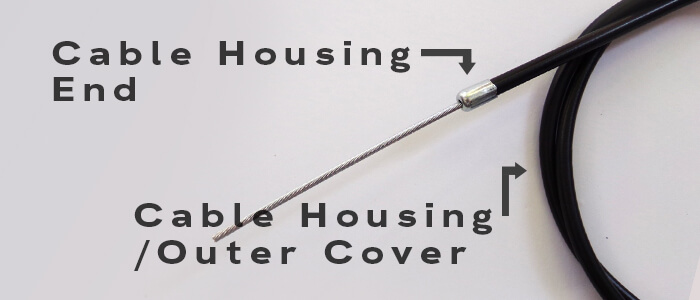
As discussed earlier, the clutch cable of the motorcycle will get worn over time with a lack of lubrication and no maintenance routine
A clutch cable will get stuck inside the cable housing or cable housing ends if the cable has fraying on it, which will get latched into the inner side of the cable’s outer cover (housing/insulation).
These broken strands of clutch cable made from stainless steel will create a high amount of friction too.
This friction causes the motorcycle clutch hard to pull or the feedback of tightness/stiffness when you pull the clutch lever while shifting gears.
How To Fix: The reason the clutch cable gets stuck inside the cable housing is due to fraying. Once the clutch cable/wire has frayed it needs to be completely replaced. Refer to the service manual or OEM parts to know the recommended clutch cable length for your motorcycle.
8. Bend Or Damaged Clutch Actuator Or Pushrod
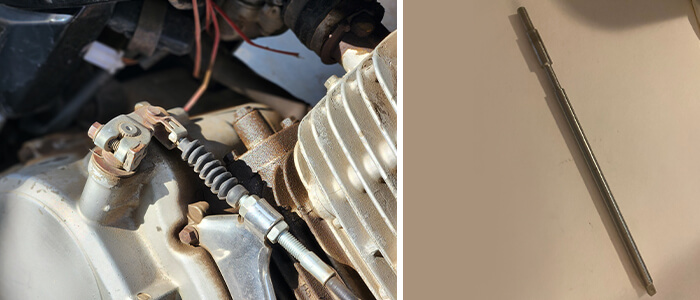
One end of the clutch cable is attached to the clutch lever and the other end is connected to the clutch actuator placed on the clutch cover.
Whenever you pull or release the lever the clutch actuator and its actuator arm connected to the pushrod pushes the pushrod back and forth onto the pressure plate to engage or disengage the motorcycle’s clutch.
A corroded or bent clutch actuator or its arm or pushrod will cause the motorcycle clutch lever to be hard and tight while pulling it.
A damaged clutch actuator/actuator arm or pushrod will also cause damage to the clutch assembly components such as the whole clutch pack, clutch outer basket, and inner hub.
How To Fix: If a Clutch actuator has slight rust buildup on the top part where it is outside on the clutch cover then you can use solvents to remove to rust. But anything inside the clutch such as the actuator arm or pushrod needs urgent replacement once they have significant damage such as a bend or corrosion build-up as the rust particles will cause unwanted friction inside the clutch assembly.
9. Not Lubricating Clutch Cable
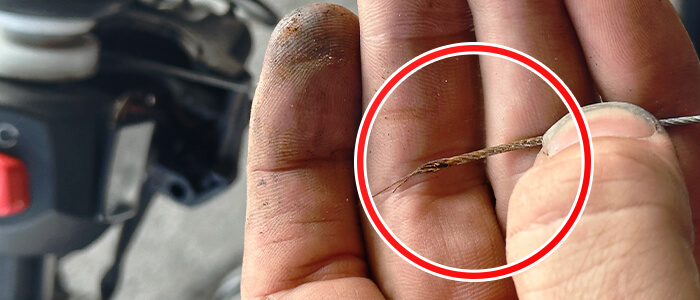
So this one is pretty straightforward, for a clutch cable and lever to operate smoothly it needs to be lubricated.
Not lubricating the clutch cable at least once a year will make the motorcycle clutch hard to pull build up corrosion and cause a lot of friction which might end up in cable snapping.
How To Fix: Lubricating the clutch cable at least once a year will avoid multiple problems regarding any kind of clutch cable or clutch-lever related problems.
H3. 10. Damaged Clutch Plates Or Clutch Basket
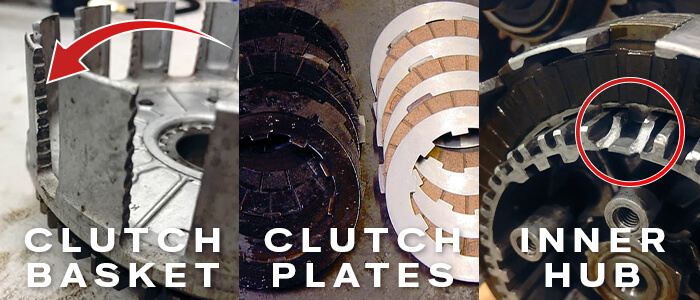
As you should know the clutch basket and inner hub rotates independently when the clutch lever is fully engaged, disconnecting the power to the rear wheel.
In the opposite scenario, the clutch basket and inner hub rotate simultaneously when you release the clutch lever, which provides power to the rear wheel.
Excessive Slack in the clutch cable can lead to clutch slipping and too tight clutch cable can lead to clutch drag/sticking.
In both of these cases, the clutch plates will not be able to fully engage or disengage leading to clutch plate wear and the whole clutch pack will create friction between the inner hub and outer basket of the clutch.
This will damage the major components of the clutch assembly such as the clutch pack, inner hub, and the clutch basket.
How To Fix: Regularly changing engine oil and lubricating clutch cable will have a great impact on maintaining the good condition of clutch assembly components. A recommended clutch lever free play will also play a part in not damaging the clutch pack, clutch basket, or inner hub.
How Can I Make My Motorcycle Clutch Easier To Pull?
To make the motorcycle clutch easier to pull you can replace the stiffer clutch springs on your motorcycle or maintain the good condition of the clutch cable and lever by lubricating and adjusting an average of 10-20 mm of clutch lever free play.
Aftermarket EZ pull clutch levers are also a great alternative but you would have to adjust the right amount of clutch lever free play which you can do by referring to a service manual of your motorcycle.
An alternate way of adjusting the free play of aftermarket clutch levers if they are shorter in length compared to your OEM clutch lever is by having a gap of 2-4 mm free play at the start of the clutch lever until the motorcycle clutch starts to engage.
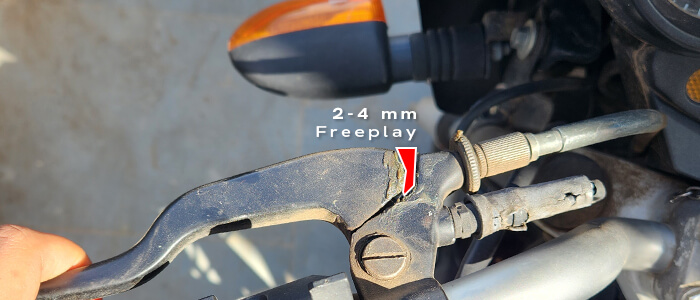
By proper lubrication of the clutch cable and adjusting its free play (slack) you can make your motorcycle’s clutch easier to pull.
How Often Should I Lube My Clutch Cable?
An unlined stainless steel clutch cable needs lubrication by an aerosol specialist cable lubricant once or twice a year or every 6,000 miles (10,000 Kilometers). PTEF (Teflon) or Nylon lined clutch cables generally don’t need any kind of lubrication but a light application of clutch cable won’t cause any harm.
I have bear the brunt of stiff/hard clutch cable many times in the past and it’s not a pleasant feeling and can ruin the whole riding experience.
So as you know by now lubing the clutch cable and adjusting it correctly is very important and can be often forgotten as it’s a small part of the whole maintenance routine but an important one.
Conclusion
For a motorcycle clutch to be hard while pulling is often related to damaged, worn, or corroded components of the clutch assembly such as clutch cable, clutch basket, inner hub, clutch plates, pushrod, clutch actuator or its arm, and wrong adjustment of clutch cable slack of clutch lever.
Lack of clutch cable lubrication and clutch assembly lubrication from low levels of engine oil will cause a high amount of friction and lead to permanent damage to these parts. So follow a systematic maintenance routine to avoid these problems.


